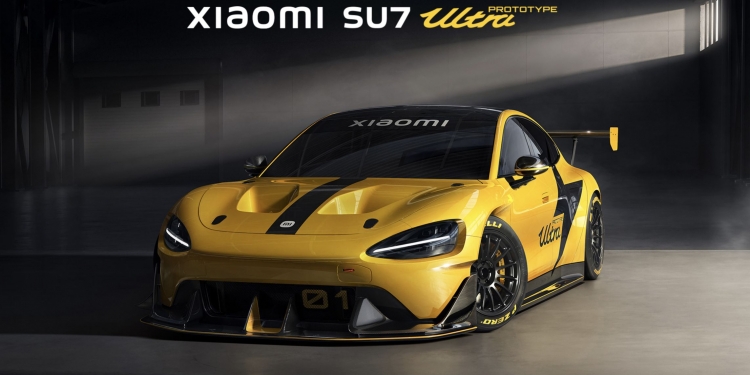Xiaomi CEO Lei Jun spoke at length about his EV journey during today’s event in Beijing. In less than three years, the brand better known for making smartphones and connected smart home appliances, has finally rolled out its SU7 EV to customers early this year.
While the current range-topping Xiaomi SU7 Max boasts Porsche Taycan levels of performance, the company isn’t done yet with its performance aspirations. Meet the Xiaomi SU7 Ultra Prototype, an insane performance four-door EV designed to tackle the Nurburgring.
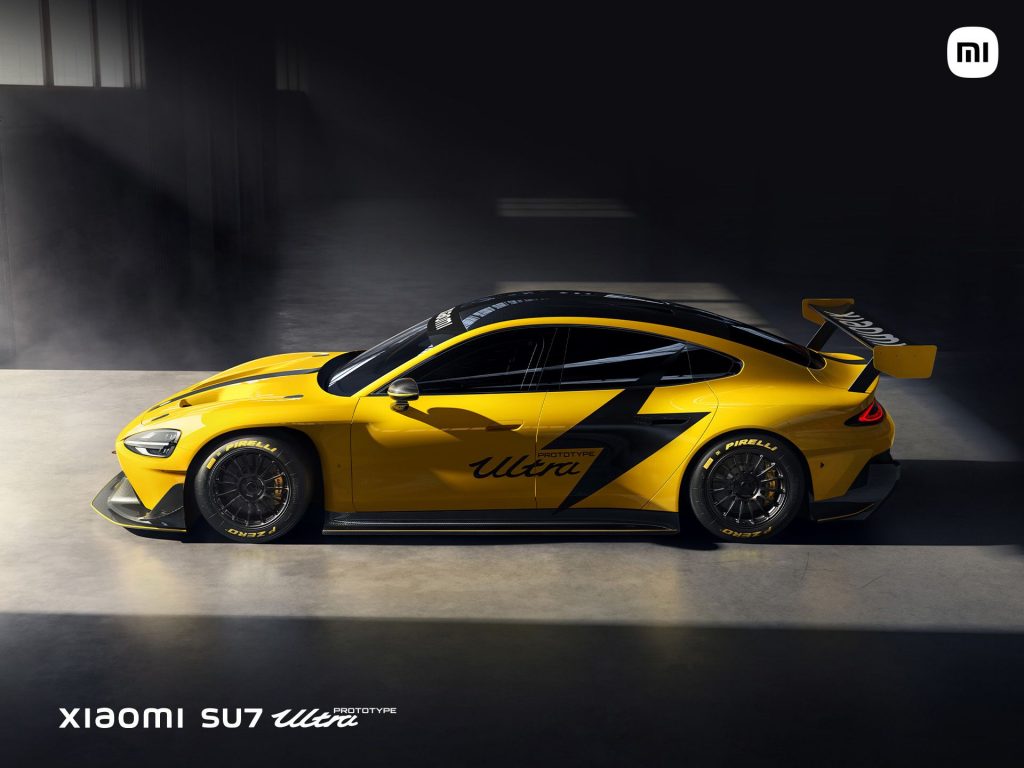
The SU7 Ultra is Xiaomi’s answer to ultra-high-performance EVs like the Lucid Air Sapphire and the Tesla Model S Plaid. Developed based on the same SU7 platform, the Ultra Prototype is powered by a tri-motor setup consisting of two HyperEngine V8s motors and one HyperEngine V6s motor. With a combined 1548 PS (1526hp), company claims that the SU7 Ultra is more powerful than a Bugatti Chiron and the McLaren Speedtail. Each V8s HyperEngine motor goes up to 27200rpm while producing 578 PS (570hp) and 635Nm of torque.
Utilising its self-developed three-motor torque vectoring system, the SU7 Ultra claims to deliver 0-100km/h time in 1.96 seconds, 0-200km/h in 5.96 seconds and 0-300km/h in 15.07 seconds. The maximum top speed is said to be above 350km/h.
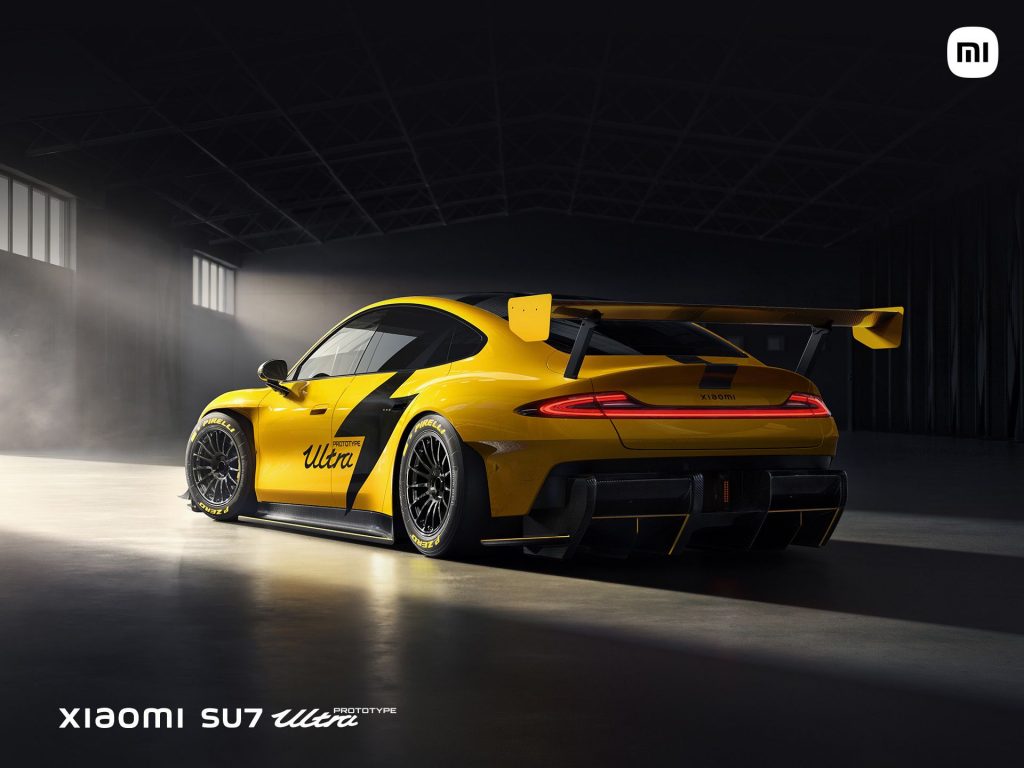
The rest of the hardware has also been optimised to deliver high power output. It utilises CATL’s Qilin 2.0 battery that supports a high 1330kW power output with 897V peak voltage and a 5.2C charging rate. Xiaomi claims that the SU7 Ultra can still push over 800kW (1073hp) even when the battery level is at 20%.
When you’re going at such high speeds around the track, the braking performance is equally important as well. The SU7 Ultra gets AP Racing high-performance six-piston callipers for the front and back. Also included are 42mm ultra-thick racing brake discs at the front and 32mm discs at the rear. Combined with high-temperature resistant brake pads and regenerative braking, it claims to have a maximum deceleration of 2.36g with a 100-0 km/h braking distance of 25 metres.
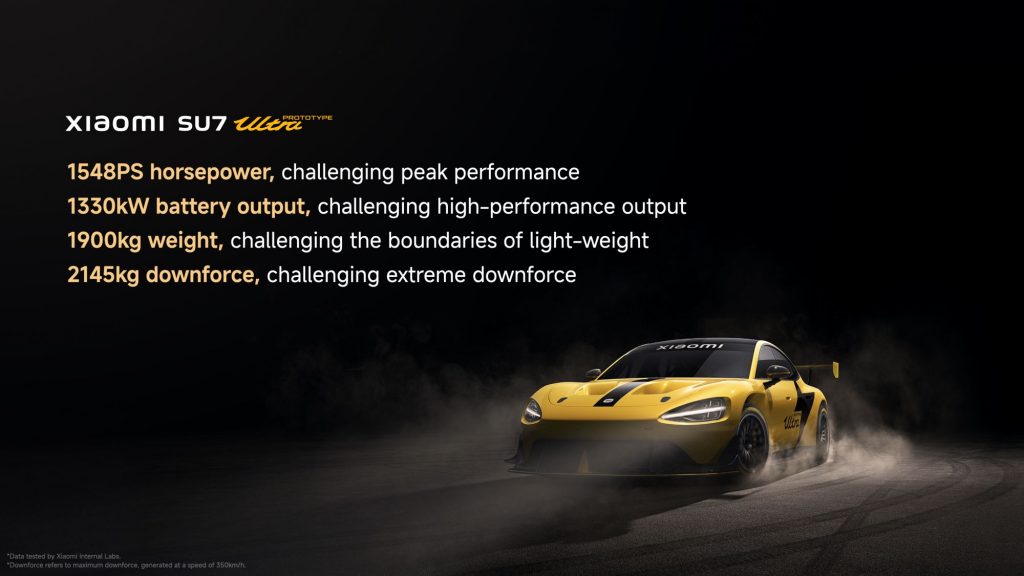
Besides equipping the SU7 Ultra with high-performance motors and batteries, the SU7 Ultra Prototype has undergone a massive weight reduction exercise. Using 100% carbon fibre for all 24 body panels, the SU7 Prototype weighs just 1900kg. Xiaomi claims it is lighter overall than the BMW M5 (F90), the Tesla Model S Plaid (Track Package) and the Porsche Taycan Turbo GT (Weissach Package).
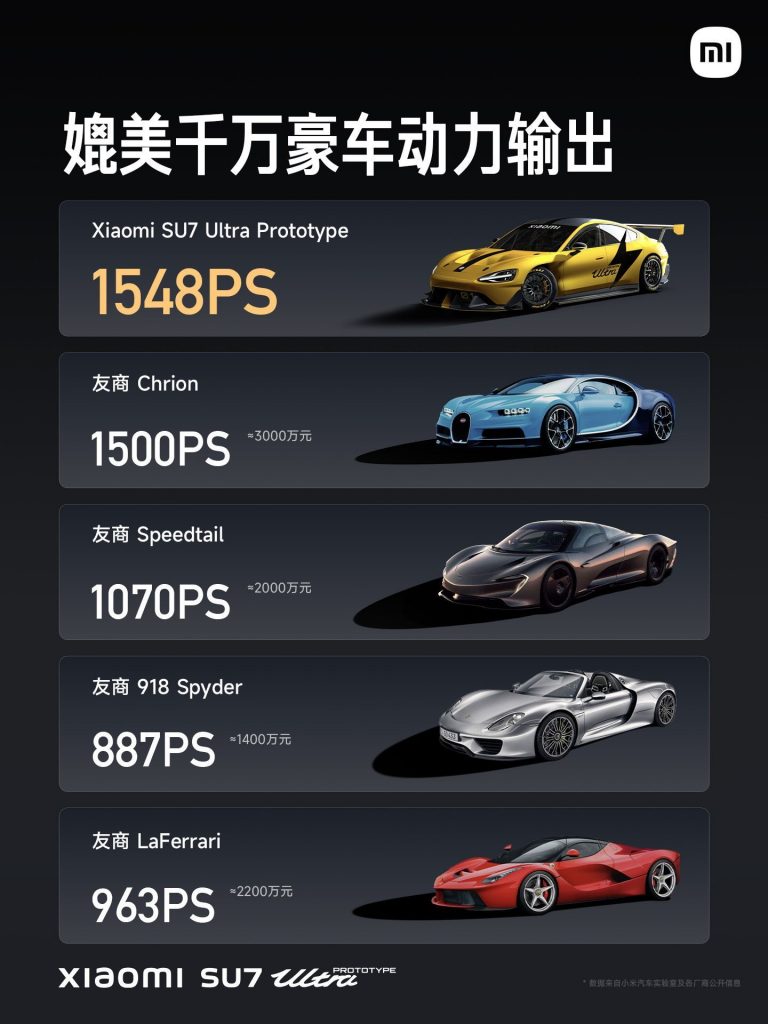
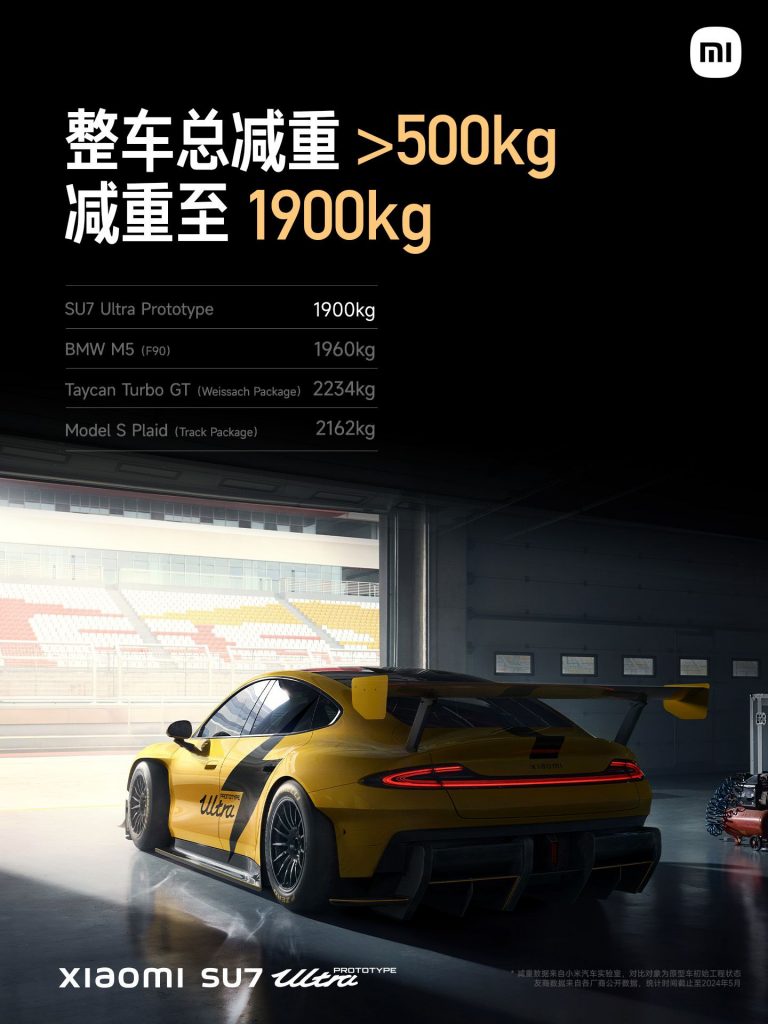
This coming October, Xiaomi aims to set a lap record at the Nürburgring Nordschleife circuit for non-production cars. They also expect to have the production car to set a lap time by next year. According to Lei Jun, his ultimate goal is to create the fastest four-door EV in the Nürburgring within 10 years.
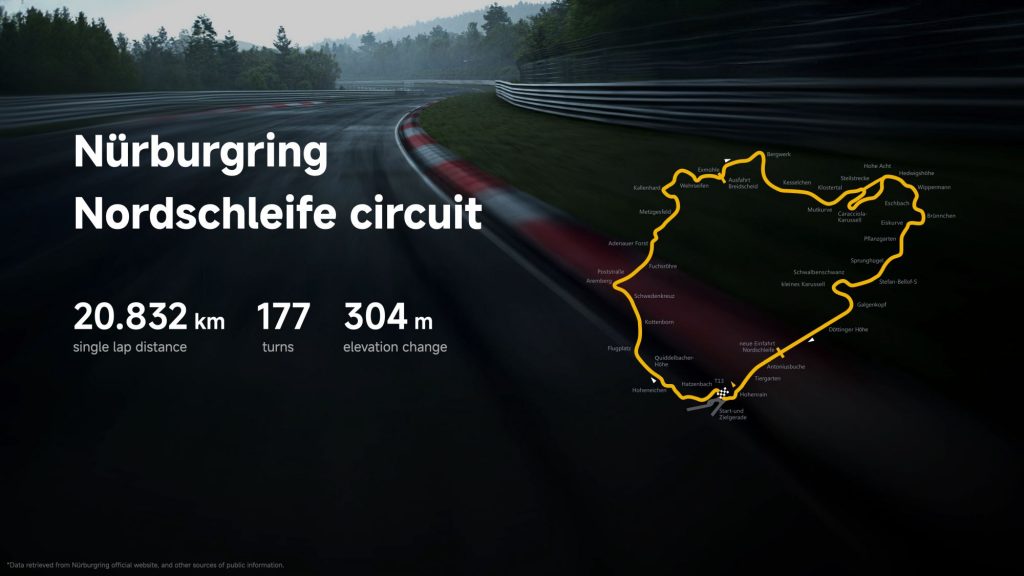
Explaining why Xiaomi is focusing on a four-door instead of a high-performance two-door vehicle, Lei Jun says the development of a four-door EV is crucial for applying their technologies to production cars of the future. He said the focus on four-door EVs was deliberate as he believes high-performance vehicles shouldn’t be reserved for a few.
You can learn more by checking out the Xiaomi SU7 Ultra Prototype page.

